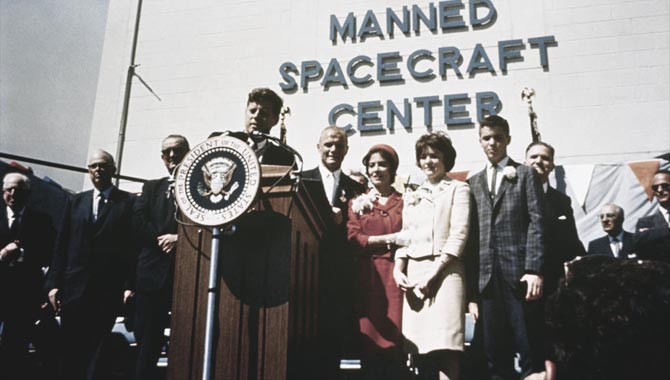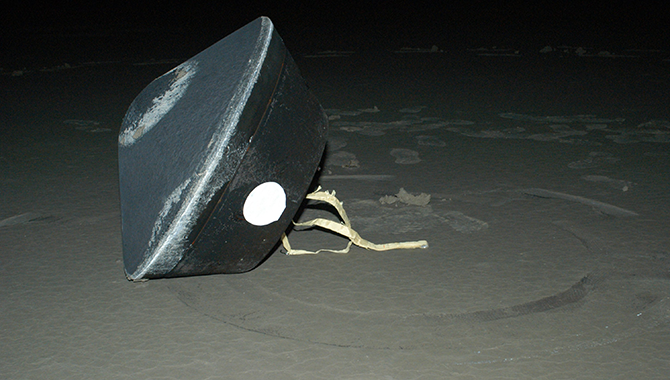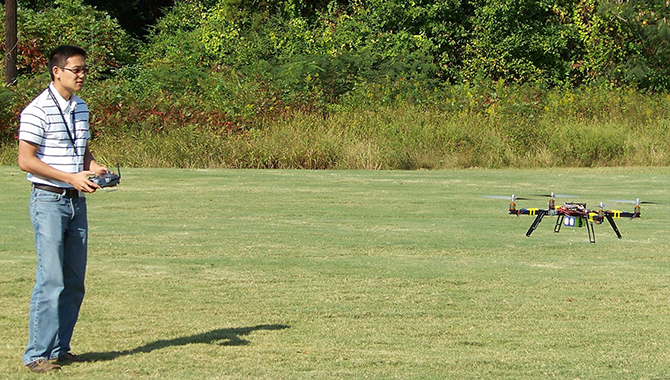
On February 23, 1962, President John F. Kennedy visited Houston to praise John Glenn for his Friendship 7 flight earlier that month.
Photo Credit: NASA
Fifty-five years ago, NASA announced that the Space Task Group (STG), formed to foster the U.S. human space exploration program, was headed for Houston.
The command to send humans to the moon and bring them safely home again came on May 25, 1961. In the throes of the space race between the U.S. and USSR, President John F. Kennedy stood before Congress and proposed that the nation commit itself to realizing this bold plan before the decade was done.
Achieving that goal fell on the shoulders of NASA and—more specifically—the STG. Led by Robert R. Gilruth, the STG had been established in 1958 as a 45-person organization consisting mainly of engineers from the National Advisory Committee for Aeronautics (NACA). Its focus was on achieving manned orbital flight through Project Mercury.
The STG was a bold initiative without a definitive home base. Located at Langley Research Center (LaRC), the STG was nominally administered out of Goddard Space Flight Center (GSFC), though it largely operated independently. By the time President Kennedy called upon the nation to set its sights on the lunar surface, the STG had launched its first crewed mission and was outgrowing the available facilities in Virginia. It needed dedicated test facilities, research labs, aircraft hangars, office buildings, and other infrastructure to deliver on the promise of sending a man to the moon in record time.
The agency determined that a new center would be built: a flagship organization designed to serve as the heart and soul of the nation’s human spaceflight program. A special committee was formed, which traversed the country touring possible sites that met a very particular set of criteria. Because the STG originally believed that spacecraft would be transported by barge, the new location needed to be near a large body of water. It also had to be close to a world-class airport to facilitate test flights, a major telecommunications network to support its communications systems, and a top-notch university. It required a water supply, an established contractor base, and a mild climate to enable year-round efforts outdoors. To ensure the ever-expanding STG workforce would find the new location acceptable, the center had to be housed in a thriving urban community that could support a new high-tech institution.
By August 1961, 23 potential sites had been identified. Houston, with its proximity to Ellington Air Force Base as well as Rice University and Texas A&M, made the list. But when the committee visited the proposed site near Clear Lake, they were not impressed. Earlier that month, the land—a property owned by the Humble Oil and Refining Company and then given to Rice University to donate to the government—had been decimated by Hurricane Carla, the largest storm to hit Texas in the 20th century. More than 3,000 square miles of coastline in the Lone Star State and Louisiana were flooded. Upon reaching Houston, the committee was confronted by uprooted trees, smashed boats, and bits and pieces of houses littering the fields. It didn’t look like an ideal location for the agency’s fledgling human spaceflight program; but as the state recovered from the storm, the strengths of the Houston site clearly outweighed any concerns.
On September 19, 1961, NASA Administrator James E. Webb declared that the flagship human space exploration center would be located on a $60 million facility spanning over 1,000 acres near Clear Lake. A month later, the Manned Spacecraft Center (MSC) was formally established, and 750 NASA employees got ready to move from Virginia to the Gulf Coast of Texas.
The task of designing and building the MSC was enormous—but it wasn’t the most daunting part of the move. The bigger problem was how to develop the new center without missing a beat in the ongoing Mercury missions. That problem escalated on December 7, 1961, when MSC Director Gilruth kicked off the next project in the manned spaceflight program: Gemini. The STG—now known simply as MSC—would have to run both programs while working out of rented facilities scattered across the Houston area.
They worked that way for three years. Finally, in January 1964, 2,100 employees prepared to move into the facilities at MSC. Over the next six months, the rest of the workforce made its way to the new center. The first flight of Project Gemini took place in April 1964, right in the middle of the move. On June 6 and 7, MSC held an Open House inviting the public to visit the new facilities. More than 50,000 people toured the center. The city welcomed MSC with open arms, eventually renaming their local baseball team the Astros and later calling their basketball team the Rockets.
It took another year for the MSC to run its first flight out of the new Mission Control Center. Gemini IV launched on June 3, 1965, from Cape Kennedy in Florida. GSFC supported the four-day mission through its computer and communications centers, but flight control was handled by MSC. This event marked the formal transition of responsibility for NASA’s human space exploration program to the MSC and evoked greater public interest than any other Gemini mission. Over a thousand reporters requested accreditation to be on site for the launch, far more than MSC had facilities to hold. Ultimately, the center leased an additional building across the street to serve as a media hub for the event. The launch was broadcast on TV across the U.S. and in 12 European countries. The mission was a success.
MSC, which was renamed Johnson Space Center (JSC) in 1973, went on to serve as the nerve center for the Apollo Program, the Space Shuttle Program, and the International Space Station Program. As NASA moves forward along its journey to Mars, JSC will continue to play host to the nation’s dreams of sending humans farther into the solar system than ever before.
Learn more about how JSC continues to lead the way in human space exploration.









